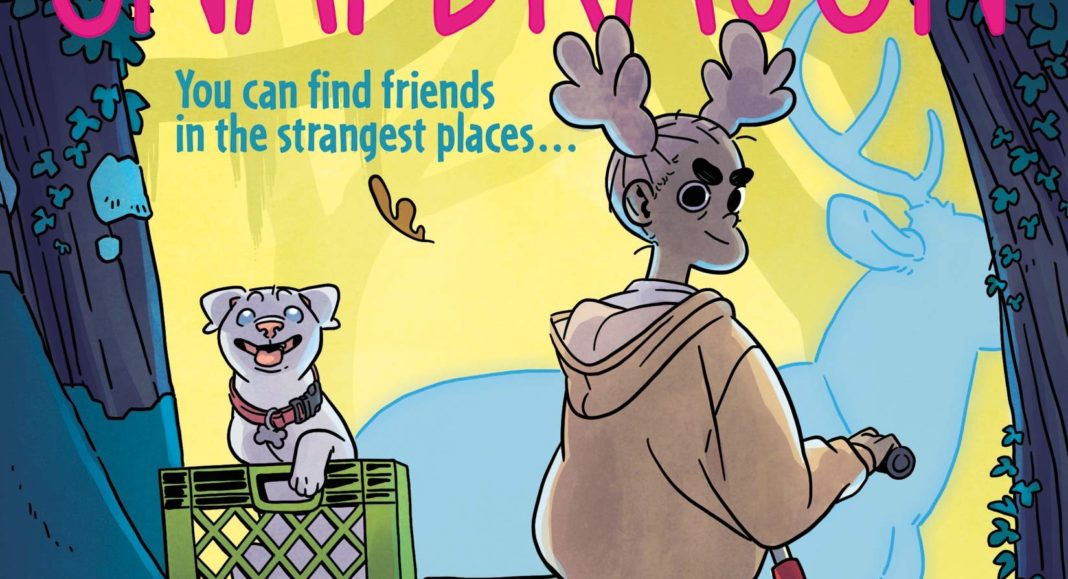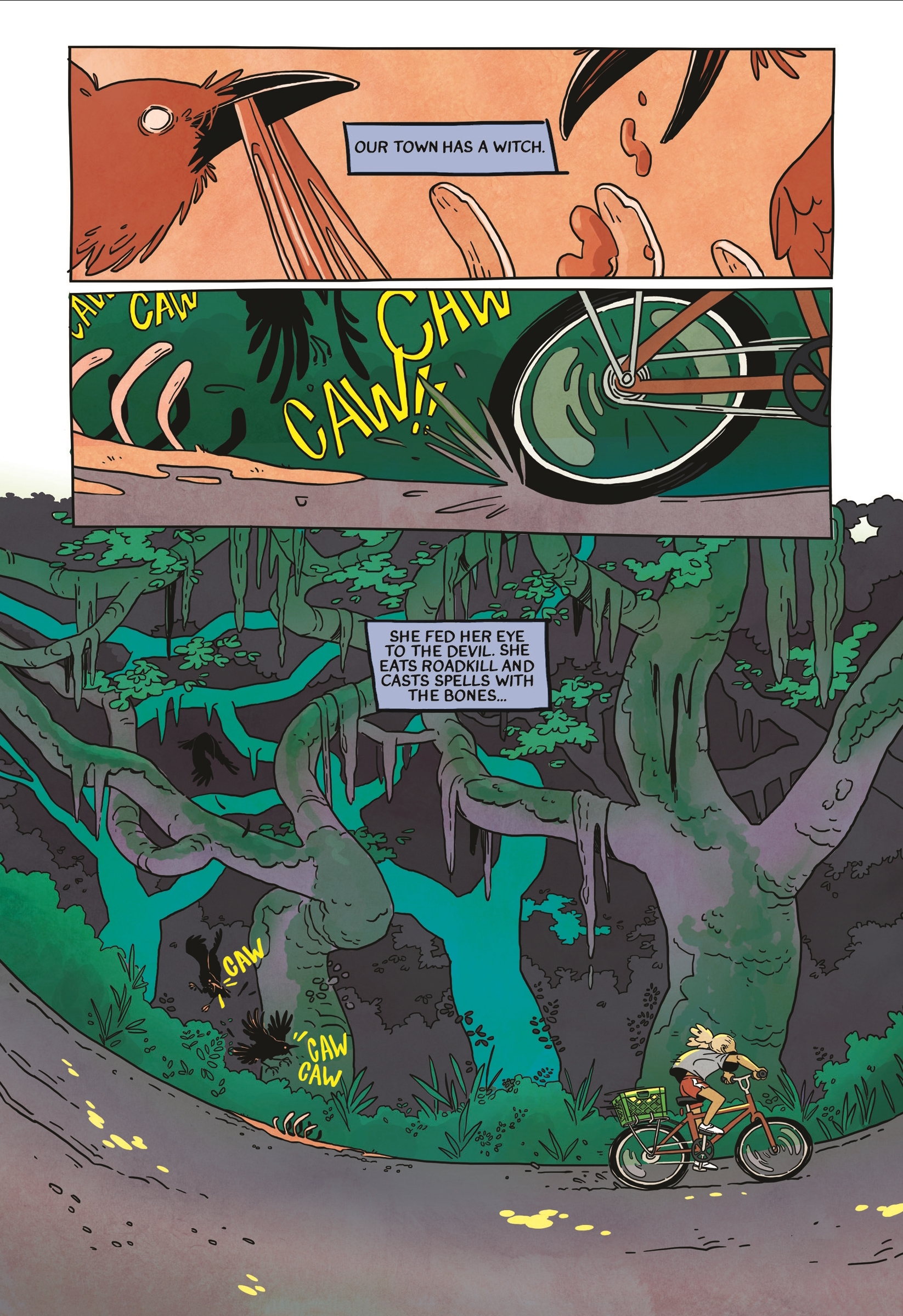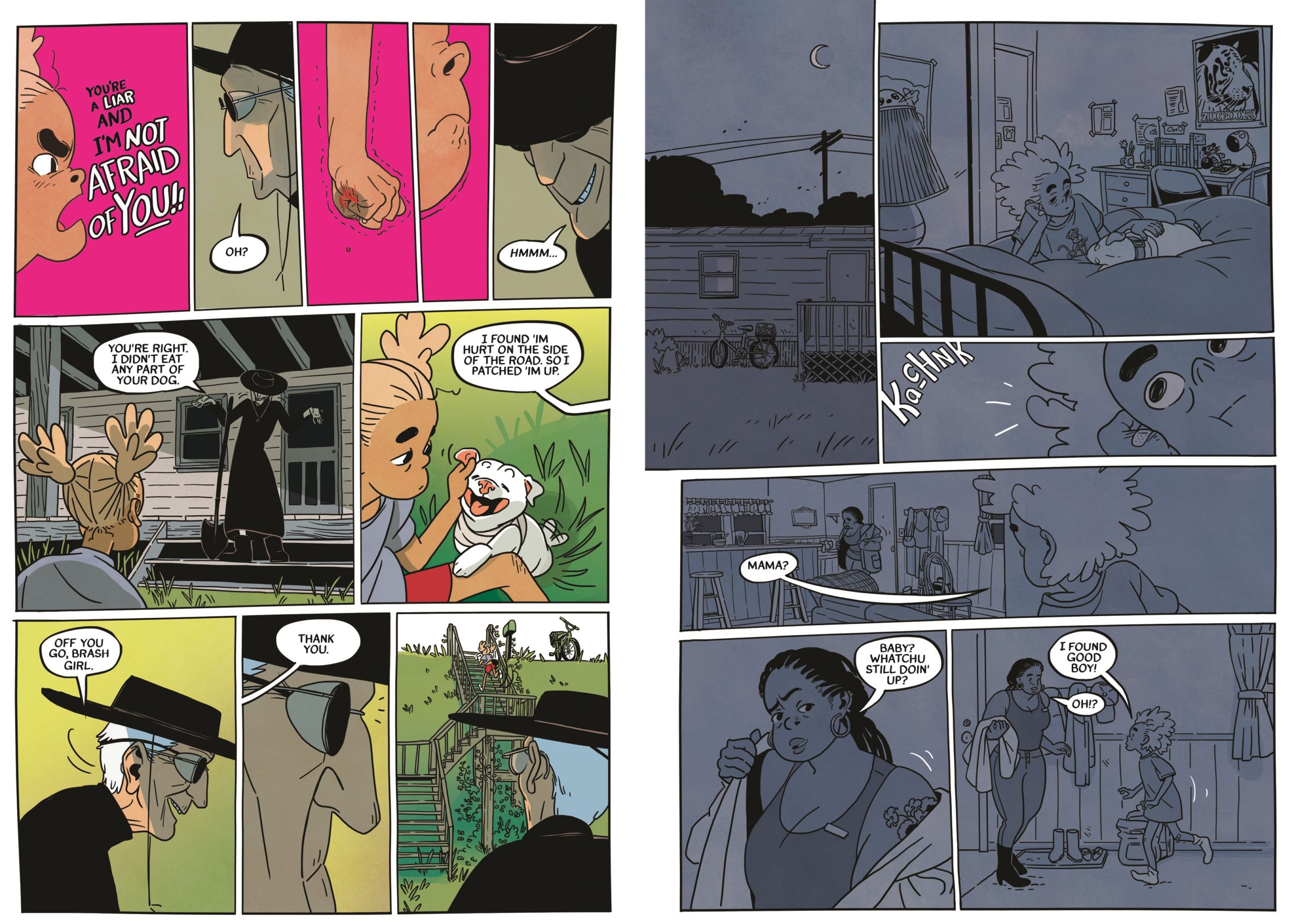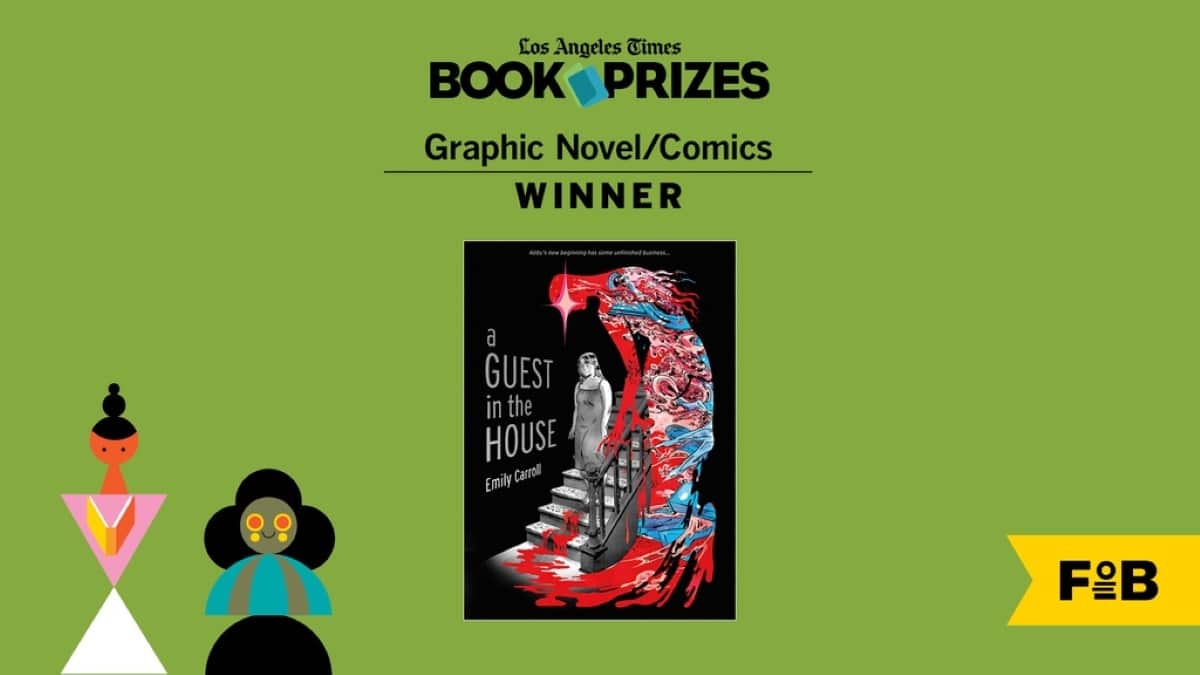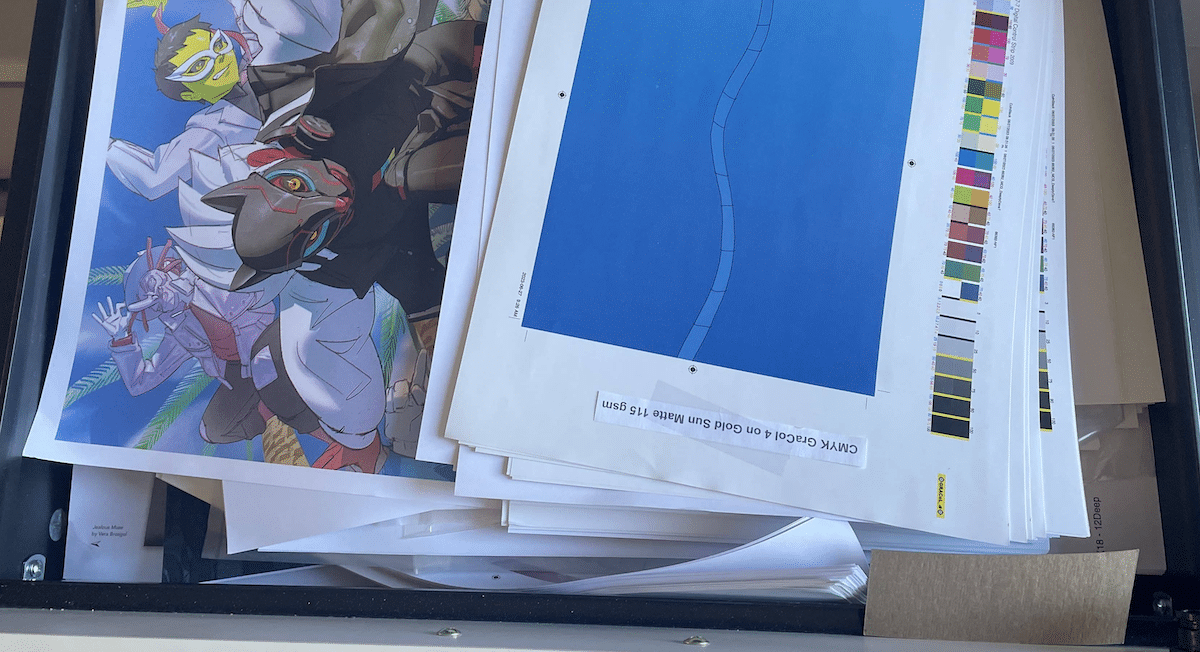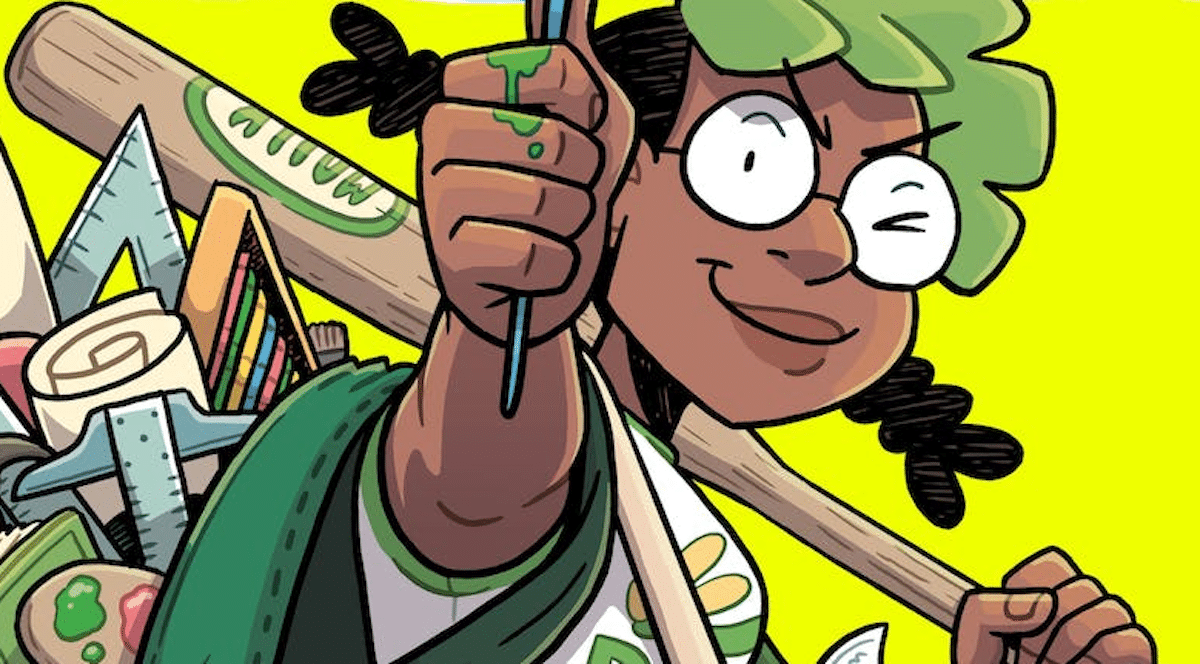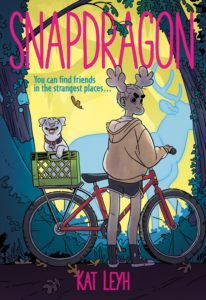
Written and illustrated by Kat Leyh
Published by First Second
Once upon a time, Snapdragon would have been the best friend role. Snap, anxious foot tapper, cool shirt over-reactor, loud about her passions on a scale of unapologetic to in your face. But this story is hers, a true telling of a fictitious girl. Kat Leyh wrote drew colored lettered it, Kat Leyh had a vision and it is powerful and touching, hilarious and important, Snapdragon is sublime.
The story hangs on a friendship. One old strange woman. One courageous girl from the weird kids lunch table. Roadkill and rebirth. Possums and parenthood. Leyh writes a story where every coincidence is an echo of a deeper connection. When Snapdragon met Jacks, that’s when everything changed for them both.
The girl wild enough to headbutt a bully getting to stand as the star and not a foil, I love this. Moreso because we’re going on an adventure about her, not about her reconciling being different. Jacks has her own story. Snapdragon’s friends and mother and even her dog Good Boy have their own stories in Leyh’s rich tapestry of characters and life.
Identity is the connecting factor in their stories. People discovering theirs, yes, but within the story. Like Snap being just being weird and going with it, people becoming themselves while otherwise occupied. Snapdragon is very much about its characters blossoming into their full potential. But. Being a witch is maybe the growing, the room also for death and decay and things ending, and making magic by connecting what passed into the seeds of what’s next.
So Snap is finding purpose and focus in caring for animals and studying their makeup, while Jacks is reconciling multiple secret identities. Not a tool for Snap’s growth, Jacks is a formidable old lady with a story and a life. Jacks’ growth is reconciling her older person stuff in an active way, not a passive, reflective way. She is Tehanu of Earthsea. Maybe the faintest hint of Granma Ben of Atheia. Definitely an underground motorcycle racer in semi-drag. Many lives make up a person.
I love everybody in Snapdragon’s life. Lu is Snap’s best friend, and their development from Lou to Lulu occurs as Snap discovers things about herself. Snap’s mom is goddamn great, super supportive of her daughter (and her friends), a mom who is committed to children reaching their full potential. We get some great moments where Vi stands up for Snap, some tenderness in the home life latchkey kid working parent moments, a little bit of time with everyone. You can just feel this book so hard. Leyh amplifies the feeling of a moment by capturing it, a cartoon of it, bigger than it is, and its bigness reaches you where you keep your secrets. This book makes me cry, the good cry, when you cry because you feel overwhelmingly alive.
Leyh has a clear and confident pen, a little simple but also quietly stylish. Every line is set and definite, no sketching, no shading. Not just round, or just angular, sometimes practically a rotoscope and sometimes total goofball cutie pie caricature. A real world, with details when they serve the story best. Snap has a supercartoon look that you can run back in a classic icons vein from Dexter’s Lab to Harvey comics. Snap looks like she could take Sluggo or any other Sunday morning broadsheet hooligan in a bike race. Jacks’ aesthetic is more bandes dessinée, a vertical stretch and thin line, again the confidence. Marc Hempel’s Sandman, or racing her motorcycle out of Scarlet Traces or some other 2000AD venture.
Most everyone else falls in the middle. Geebee is precious and animals abound. Did I mention the witch sells skeletons on the internet? Snapdragon has both coyote skull and cute bunch of baby possums hanging on to their mama. And the art style’s flexibility between impossibly silly and accurately detailed pays off in anatomic authenticity. The bones matter to Snap, as they matter to the story, and Leyh’s art honors them. Like good witches would do.
Leyh colors Snapdragon to compliment her confident and definitive drawing style. She plays to her own taste, sometimes textured and sometimes blocks of color, shadows a stripe, a cloud a bubble of pure pigment. She also letters, solid clear and occupying a good space in the bubble, a touch of zine maybe, a strong voice as present as the lines that lay out the art.
Through and through the very structure of Snapdragon– panel pacing and page turns, where the chapters break, the story’s crossing itself in time- shows a natural gift for sequential art, with muscles built up to match the scope of a well worked imagination, using that power to tell a story that matters. That’s the goal for all comics moving forward into 2020.
There’s a little note in the back matter about the materials used to make Snapdragon. Something you can find in First Second publications. I see this as honoring a bookmaking pedigree graphic novels once actively sought, the name of the pen as the comics analog to a note on a particular edition’s typeface. At the same time its providing details for young, curious minds who love the book so much they want to understand the process of its creation.
So much joy and truth in this book to cover I didn’t have time to talk about the one-eyed fox ghost. Leyh brings robust ideas to Snapdragon, and a broad folio of styles to breathe life into them. The most vivid is Snap, sprout blossom and bloom, and the challenges to her character, told as a story of growth, perseverance, and triumph.


